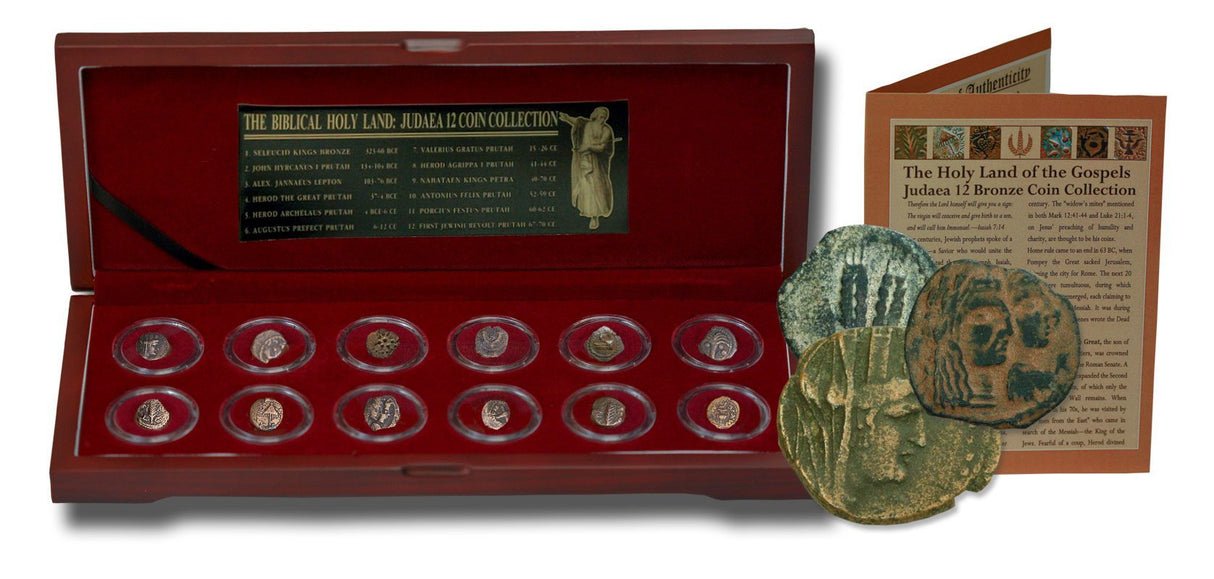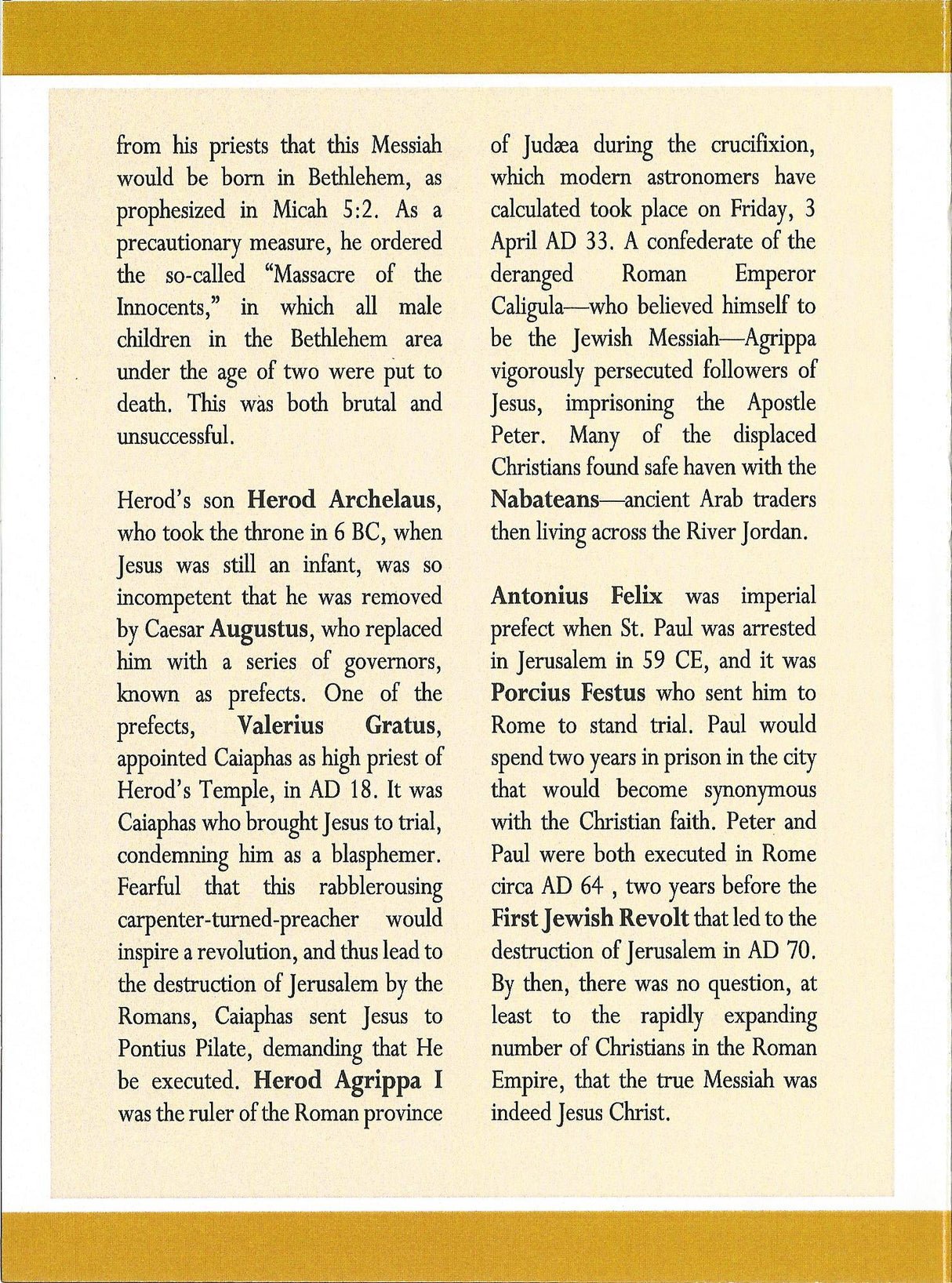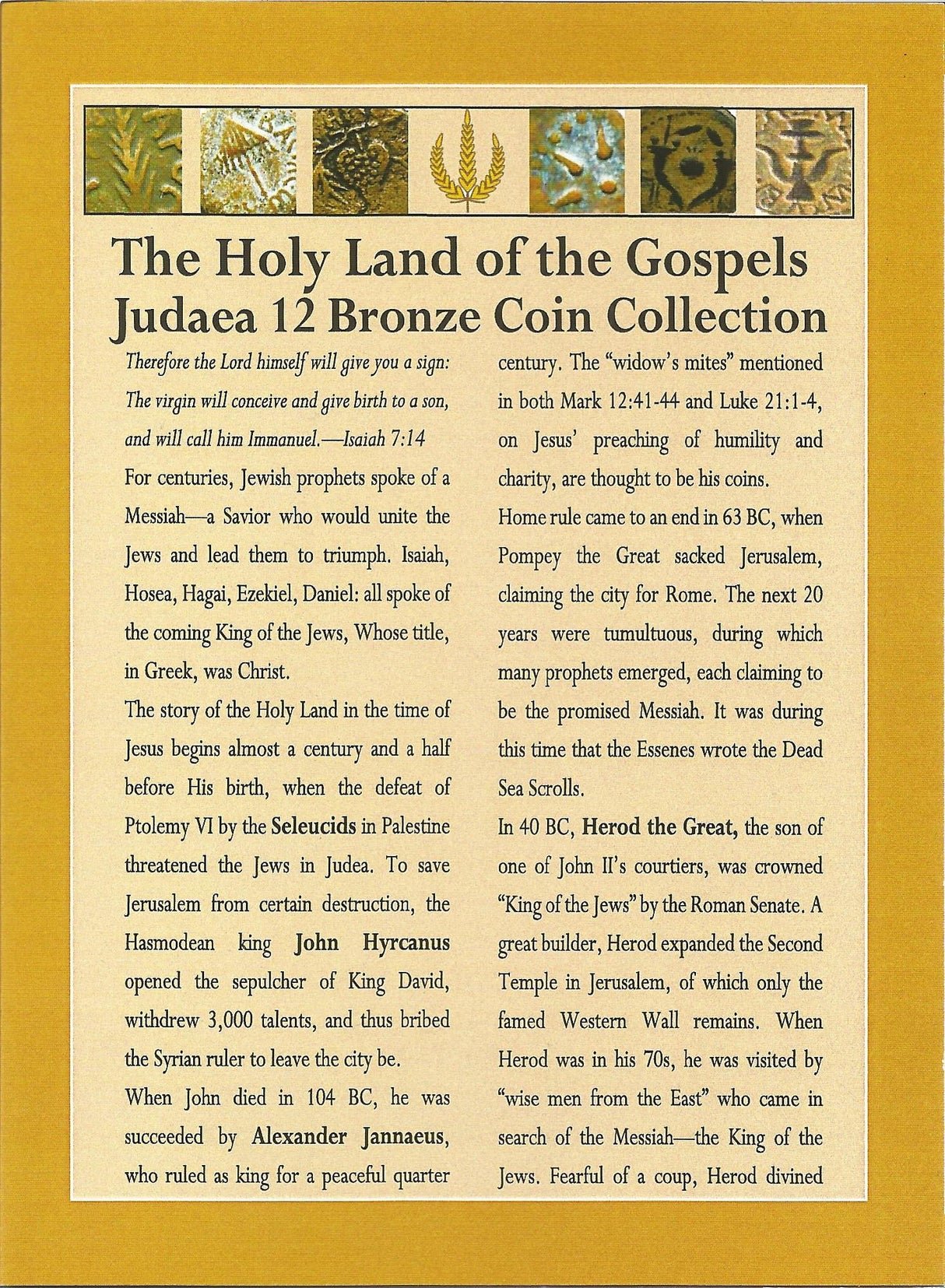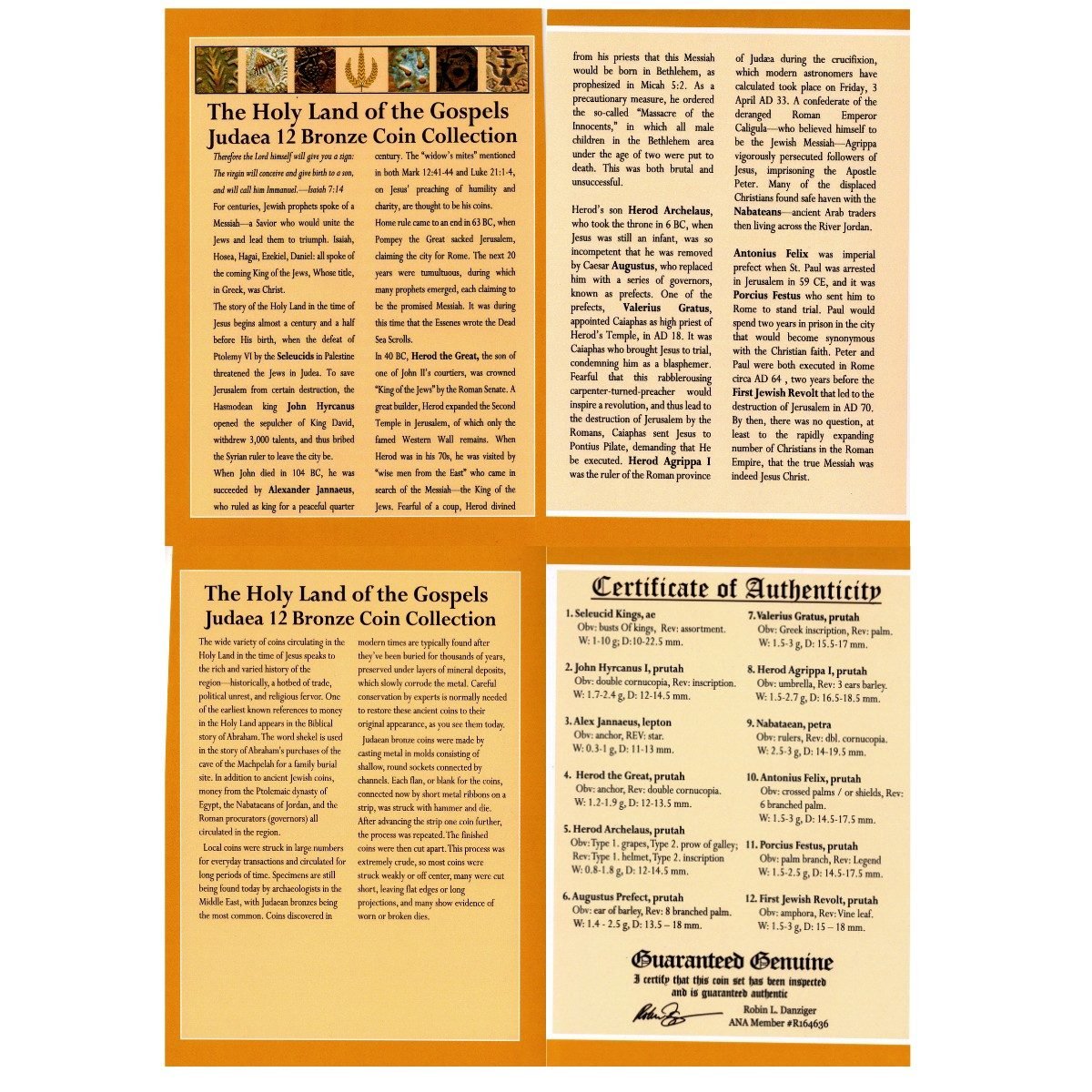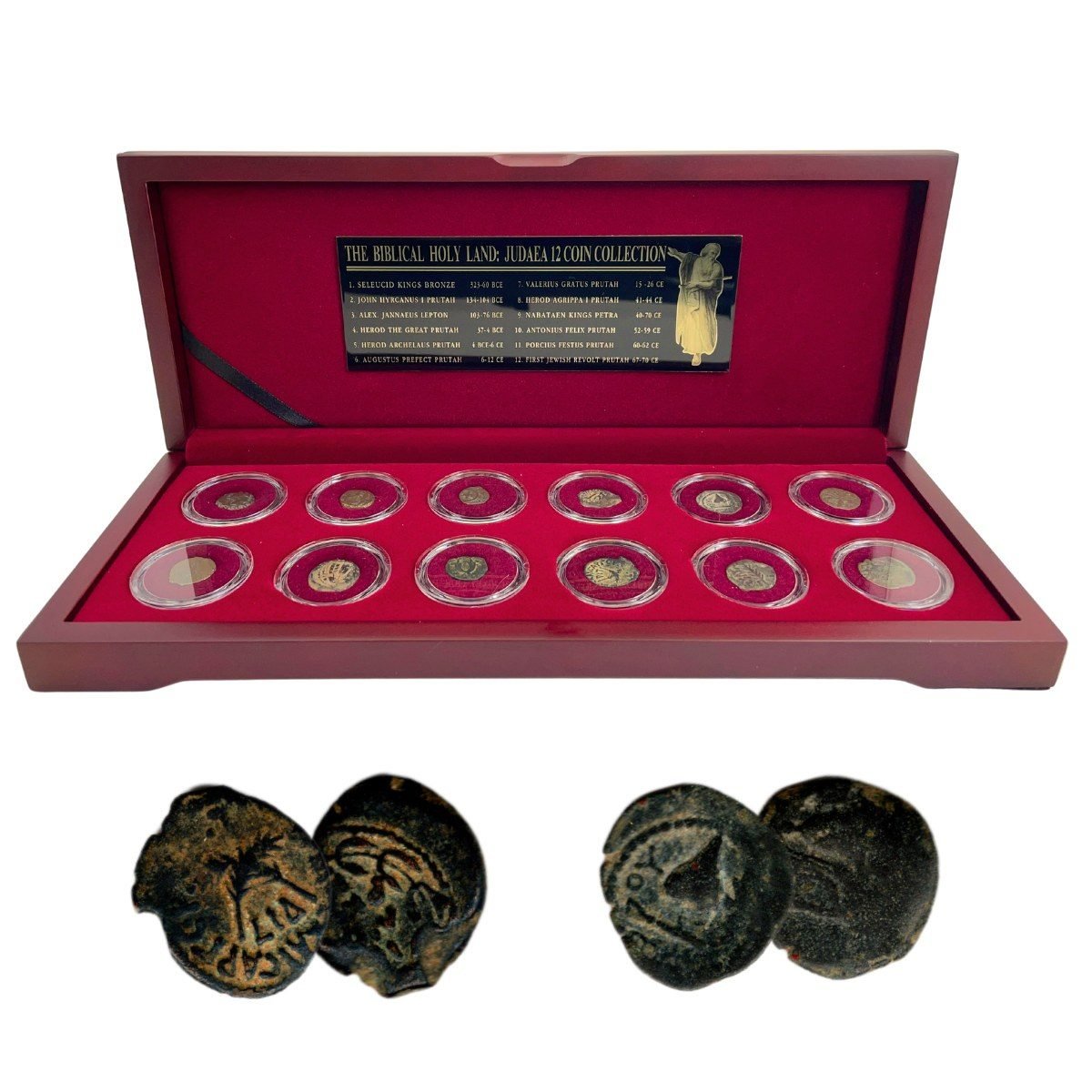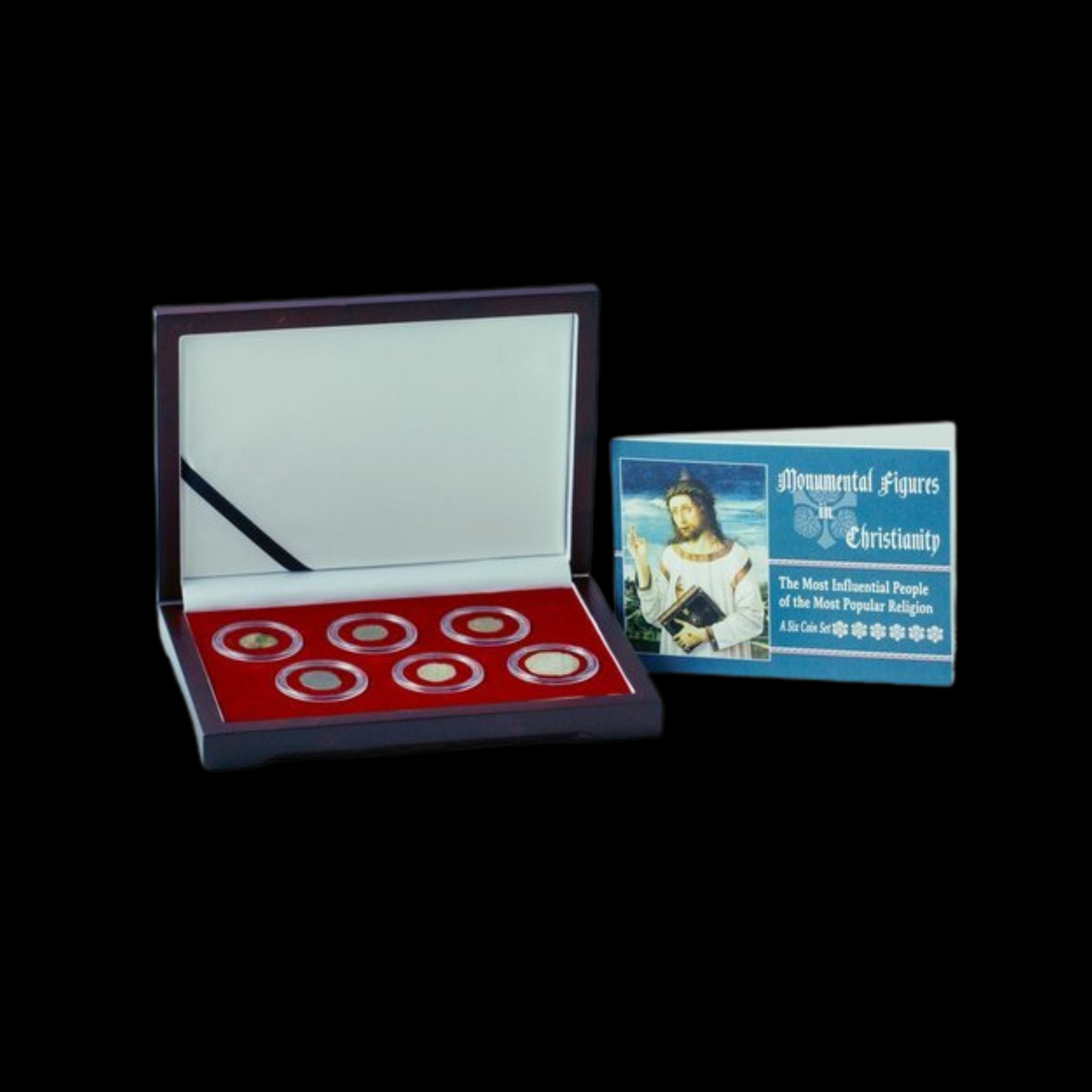 Image 1 of 4
Image 1 of 4

 Image 2 of 4
Image 2 of 4

 Image 3 of 4
Image 3 of 4

 Image 4 of 4
Image 4 of 4





Judaea Bronze Prutah of Pontius Pilate (about 1,990 years ago)
This small bronze coin was issued during the governorship of Pontius Pilate in Judaea (modern-day Israel/Palestine), who served as the Roman prefect from 26-36 CE. It represents the official currency used during a pivotal period in religious history when the region was under Roman control.
Coin Description:
Front side: Three bound ears of barley or wheat, with the Greek inscription "TIBEPIOY KAICAPOC" (of Tiberius Caesar).
Back side: A ritualistic Roman object called a lituus (curved augural staff), with the date in Greek letters indicating the year of Emperor Tiberius's reign.
Technical Details:
Material: Bronze
Denomination: Prutah (the smallest denomination in the Judaean currency system)
Catalog/reference numbers: Hendin 649, RPC I 4967
Certification: NGC (Numismatic Guaranty Corporation)
Minting date/period: 26-36 CE (approximately 1,990 years ago)
Condition: As certified by NGC
Historical Significance:
This coin circulated during the time when Pontius Pilate governed Judaea (modern Israel/Palestine) as a representative of Rome. Pilate became historically significant for his role in the trial and crucifixion of Jesus Christ. These small bronze coins would have been used in everyday transactions by the local population living under Roman rule, demonstrating how the empire maintained political control through both military presence and economic systems.
This small bronze coin was issued during the governorship of Pontius Pilate in Judaea (modern-day Israel/Palestine), who served as the Roman prefect from 26-36 CE. It represents the official currency used during a pivotal period in religious history when the region was under Roman control.
Coin Description:
Front side: Three bound ears of barley or wheat, with the Greek inscription "TIBEPIOY KAICAPOC" (of Tiberius Caesar).
Back side: A ritualistic Roman object called a lituus (curved augural staff), with the date in Greek letters indicating the year of Emperor Tiberius's reign.
Technical Details:
Material: Bronze
Denomination: Prutah (the smallest denomination in the Judaean currency system)
Catalog/reference numbers: Hendin 649, RPC I 4967
Certification: NGC (Numismatic Guaranty Corporation)
Minting date/period: 26-36 CE (approximately 1,990 years ago)
Condition: As certified by NGC
Historical Significance:
This coin circulated during the time when Pontius Pilate governed Judaea (modern Israel/Palestine) as a representative of Rome. Pilate became historically significant for his role in the trial and crucifixion of Jesus Christ. These small bronze coins would have been used in everyday transactions by the local population living under Roman rule, demonstrating how the empire maintained political control through both military presence and economic systems.
This small bronze coin was issued during the governorship of Pontius Pilate in Judaea (modern-day Israel/Palestine), who served as the Roman prefect from 26-36 CE. It represents the official currency used during a pivotal period in religious history when the region was under Roman control.
Coin Description:
Front side: Three bound ears of barley or wheat, with the Greek inscription "TIBEPIOY KAICAPOC" (of Tiberius Caesar).
Back side: A ritualistic Roman object called a lituus (curved augural staff), with the date in Greek letters indicating the year of Emperor Tiberius's reign.
Technical Details:
Material: Bronze
Denomination: Prutah (the smallest denomination in the Judaean currency system)
Catalog/reference numbers: Hendin 649, RPC I 4967
Certification: NGC (Numismatic Guaranty Corporation)
Minting date/period: 26-36 CE (approximately 1,990 years ago)
Condition: As certified by NGC
Historical Significance:
This coin circulated during the time when Pontius Pilate governed Judaea (modern Israel/Palestine) as a representative of Rome. Pilate became historically significant for his role in the trial and crucifixion of Jesus Christ. These small bronze coins would have been used in everyday transactions by the local population living under Roman rule, demonstrating how the empire maintained political control through both military presence and economic systems.
Pontius Pilate[b] (Latin: Pontius Pilatus; Greek: Πόντιος Πιλᾶτος, romanized: Póntios Pilátos) was the fifth governor of the Roman province of Judaea, serving under Emperor Tiberius from 26/27 to 36/37 AD. He is best known for being the official who presided over the trial of Jesus and ultimately ordered his crucifixion.[7] Pilate's importance in Christianity is underscored by his prominent place in both the Apostles' and Nicene Creeds. Because the gospels portray Pilate as reluctant to execute Jesus, the Ethiopian Orthodox Tewahedo Church believes that Pilate became a Christian and venerates him as both a martyr and a saint, a belief which is historically shared by the Coptic Church,[8] with a feast day on 19 or 25 June, respectively.
Although Pilate is the best-attested governor of Judaea, few sources regarding his rule have survived. Nothing is known about his life before he became governor of Judaea, and nothing is known about the circumstances that led to his appointment to the governorship.[9] Coins that he minted have survived from Pilate's governorship, as well as a single inscription, the so-called Pilate stone. The Jewish historian Josephus, the philosopher Philo of Alexandria, and the Gospel of Luke all mention incidents of tension and violence between the Jewish population and Pilate's administration. Many of these incidents involve Pilate acting in ways that offended the religious sensibilities of the Jews. The Christian gospels record that Pilate ordered the crucifixion of Jesus at some point during his time in office; Josephus and the Roman historian Tacitus also record this information.
You Might Also Like
